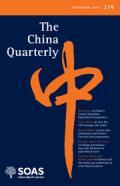
Abstract
Using a 2011 national survey of urban residents, irrespective of their official hukou status, and the 2000–2009 night-time light data from the Defense Meteorological Satellite Program Operational Linescan System (DMSP-OLS), this paper goes beyond the simple dichotomy of migrant versus non-migrant or rural versus urban hukou to disentangle the processes of urbanization and migration and their complex associations with health, and assesses the impact of various levels and speed of urbanization on the physical and mental health of current residents in a city or town. By disaggregating urbanization into three discrete dimensions at sub-provincial levels, we find that while a higher absolute level of urbanization at the county level negatively impacted self-reported physical health, faster and accelerating urbanization had a positive impact which could be attributed to the demand-pull effect underlying the healthy migrant phenomenon. By contrast, all three dimensions of urbanization were associated with greater depressive distress and thus had an adverse effect on residents’ mental health. Beyond demonstrating how variation in the process and location of urbanization affects individual health, we also illustrate more broadly the value of modelling locational parameters in analyses of individual outcomes based on national samples.
摘要
本文基于 2011 年全国城镇居民流动与生活质量调查和 2000–2009 年 DMSP-OLS 夜间灯光数据, 重新梳理了中国城镇化和人口流动的过程及其与居民健康的复杂关联, 并评估了不同的城镇化水平与速度对目前居住在城镇的居民身体和精神健康的影响。通过将城镇化的过程在县级分解成三个维度, 我们发现县级城镇化的绝对水平对居民的身体健康有负面影响, 而快速和加速度的城镇化则对居民的身体健康有正面影响, 但后者可能与健康移民现象有关。与对身体健康的影响相反, 城镇化的三个维度都与居民更多的抑郁症状相关联, 由此显示出城镇化对居民精神健康的负面影响。本文除了论证城镇化过程和地域对个人健康的影响, 同时也演示了将地域参数引入分析全国性的个人层面的变量模型中所具有的更广泛的价值。